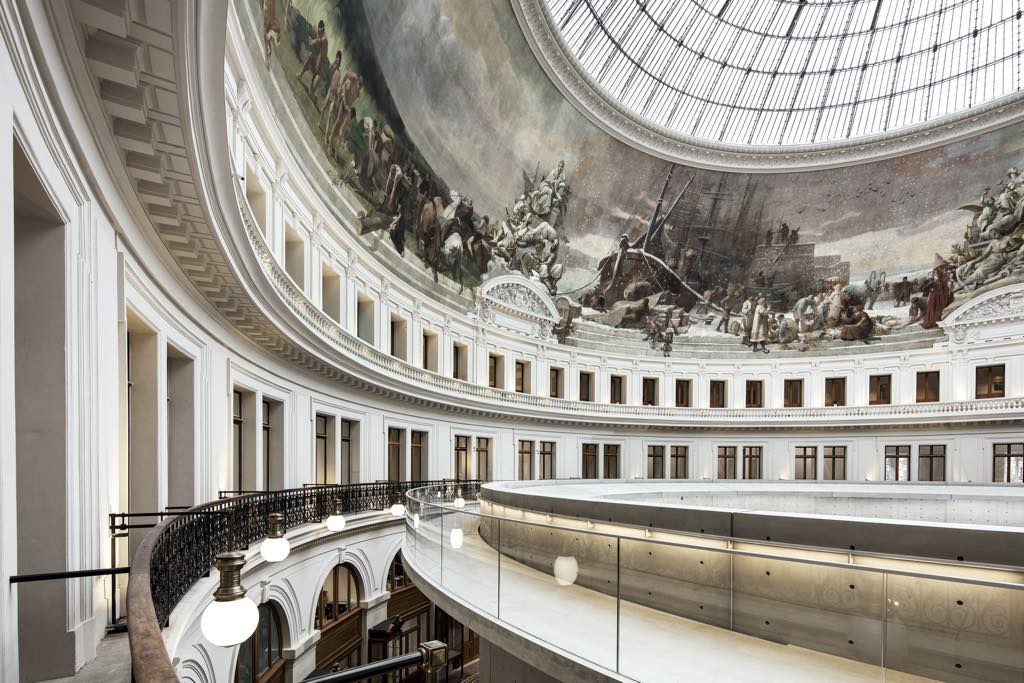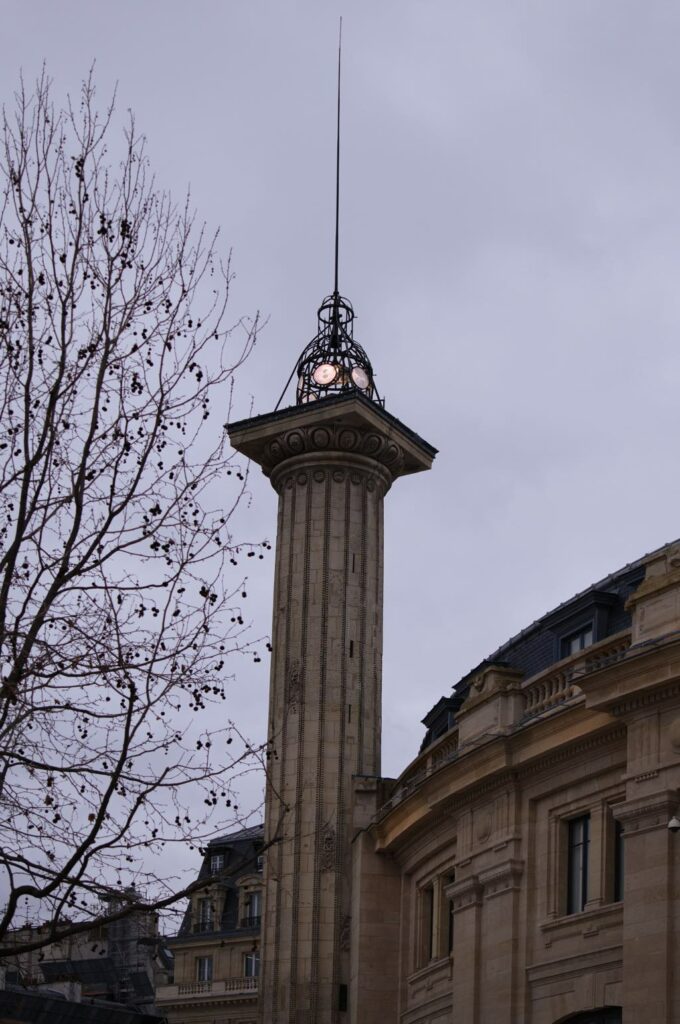
French tycoon François Pinault’s desire to show his contemporary art collection in Paris has been thwarted over and over again for more than two decades, but now his dream has finally come true. The Bourse de Commerce–Pinault Collection opens to the public this Saturday (May 22, 2021) after further delays caused by the pandemic. I am here to tell you that it is fabulous – and worth the wait.
The long saga began when Pinault, owner of the luxury conglomerate Kering, set his sights on the Île Seguin, just outside of Paris, where a gigantic Renault factory once took up the whole island, as the perfect site for a new building to house his collection. Years-long delays in getting building permission from the French government so frustrated him that he packed it all in and moved his collection to Venice, where it is now shown in the Palazzo Grassi and Punta della Dogana.
Meanwhile, the Fondation Louis Vuitton, the baby of Bernard Arnault (then-CEO of LVMH and Pinault’s rival in both business and art collecting), opened in a spectacular Frank Gehry-designed building just outside of Paris in 2014.

Pinault did not completely give up on Paris, however, where a beautiful historic building in the center of the city stood empty: the circular, glass-domed Bourse de Commerce, built in the 19th century on the site of an 18th-century grain exchange and flanked by a mysterious tower topped with a sort of iron cage, all that remains of a 16th-century mansion built by Catherine de’ Medici, which once stood on the site. (The tower was Catherine’s “astrological column,” from the top of which her astrologer Cosimo Ruggieri used to make divinations; his ghost is said to occasionally appear there.) Philippe Parreno’s work “Mont Analogue” now lights up the Medici Column at night.
As a historical monument, the Bourse de Commerce, which does not belong to Pinault but has been rented for a 50-year period, cannot be altered. Pinault’s chosen architect, Tadao Ando, who has been working with him since the Île Seguin days, found a brilliant solution for that problem and one other – how to show contemporary art in all its great variety in a historical building – by inserting a freestanding (hence removable) circular concrete wall into the center of the building. With its light-gray color and smooth surface, it is both beautiful and unobtrusive, a perfect foil for contemporary art.
I was impressed with the great attention that went into every detail of the building and its fittings and the great consideration shown for visitors. Although getting from place to place is not always obvious, the signage is clear, and there are always staff members nearby to guide you. Many of them are cultural mediators (identifiable by badges on lilac-colored lanyards), who are there to explain the architecture and the artworks to visitors. They speak English and offer guided tours in English on weekends. A free app (scan the bar code at the entrance) also provides a wealth of information. Another little nicety was a rack of portable stools available for visitors who need to sit down while contemplating the building and its contents.
And what of the art? The multiple opening exhibitions were as impressive as the building, with none of the gimmicks you might expect (and fear) from contemporary art. Visitors will definitely get their money’s worth.

The rotunda, with its splendid glass dome, is sparsely populated with an installation by Urs Fischer. In the center is a life-sized copy of Giambologna’s “The Abduction of the Sabine Women” (1579-1582), which looks as if it belongs there, but how to explain the disparate types of chairs scattered here and there, including a double airline seat and a cheap white-plastic garden chair, and the life-size statue of a man? They all look real but are actually made of wax and have wicks implanted in them, which will be lit every day. By the end of the show, there will be nothing left of these unusual candles but piles of wax.
Each of the original wooden vitrines outside the concrete wall contains a work by Bertrand Lavier, while sculptures from Tatiana Trouvé’s touching “The Guardian” series – eight chairs, each holding the belongings of a fictional guardian who once supposedly sat there, impermanent objects made permanent in such materials as marble and bronze – are scattered around the building.

Also on the ground floor, Gallery 2 houses a wonderful exhibition by American artist David Hammons, many of whose pieces made from found objects might elicit a smile – a basketball hoop mounted on a mirror and framed with crystal chandelier lights, for example, or “Minimum Security,” a barren prison cell with two cots but no walls or bars.
One floor up, Gallery 3 presents groups of photos by Michel Journiac, Martha Wilson, Sherrie Levine, Cindy Sherman, Richard Prince and Louise Lawler, artists who share a socio-political point of view in their staged photos and/or who were pioneers of appropriation of the work of other photographers. Freed from the need to depict reality, they used photography “to create forms of fiction, challenging notions of identity and raising new questions about art, gender and identity.”
On the next level, Gallery 4 features large-scale photorealistic painted portraits by Rudolf Stingel, while Galleries 5, 6 and 7 house a major exhibition devoted to the human figure, featuring paintings and sculptures by leading artists, ranging from Miriam Kahn and Xinyi Chen to Thomas Schütte and Antonio Obá.
That’s not all. Individual works are placed here and there, among them a colorful monumental painting by Martial Raysse near the entrance, and a very discreet floor-level sculpture by Ryan Gander of a mouse chewing through the wall. An installation by Maurizio Cattelan might trick you into thinking that other pests have invaded the building. Called “Others,” it consists of a group of very lifelike pigeons perched on a railing on high.
And, as if that were not enough, there are two installations in the basement worth seeing, by Pierre Huyghe (a hypnotic light and sound piece with piano music) and Tarek Atoui, who combines various moving objects and turntables to produce electronic music.
It’s worth noting that women artists and artists of color are well represented in all of these exhibitions.
On the top floor is the restaurant La Halle aux Grains, which I for one cannot wait to try, “cheffed” by the famed Michel Bras and his son Sébastien, with refined furnishings designed by Ronan and Erwan Bouroullec (who also designed the handsome furnishings for other parts of the building). Without even tasting the food, you know it’s Michelin-ready. (The restaurant will not open until June 10 because of restrictions on indoor dining before that date.)
Unfortunately, the opening weekend is already fully booked, but do go as soon as you can. Paris now has another art center in the heart of the city that will merit visiting over and over again, and which will be especially appreciated when the Centre Pompidou closes for a four-year renovation beginning in 2023. Go (book first, of course) and have fun.
Pinault can be proud of his accomplishment, a fitting riposte to Arnault’s art center in the Bois de Boulogne, but much easier to reach from the city. “I want the museum to be a place where people feel better at the exit than they did at the entrance,” he has been quoted as saying. Done!
Favorite
Can’t wait to visit this excellent new collection!